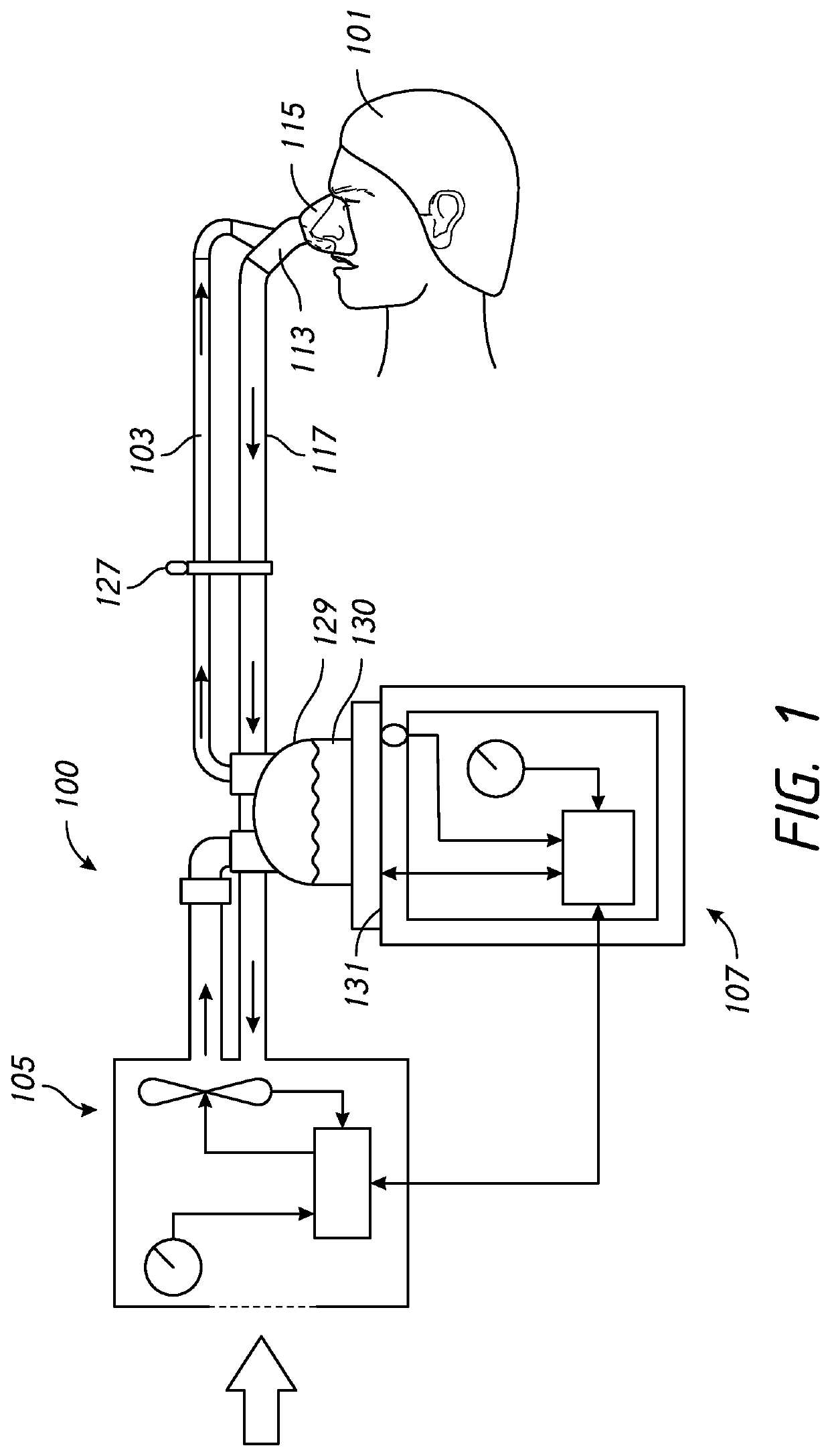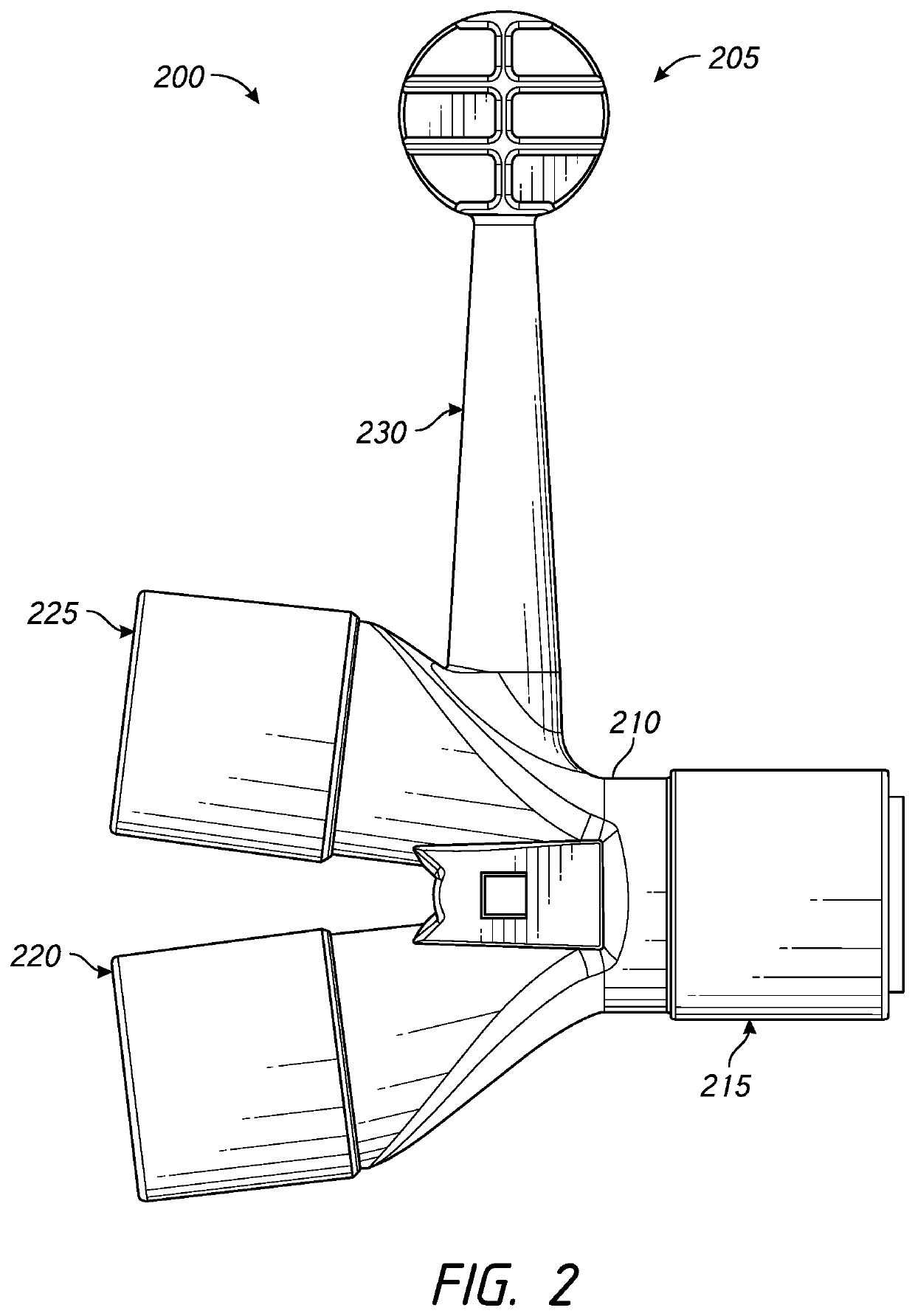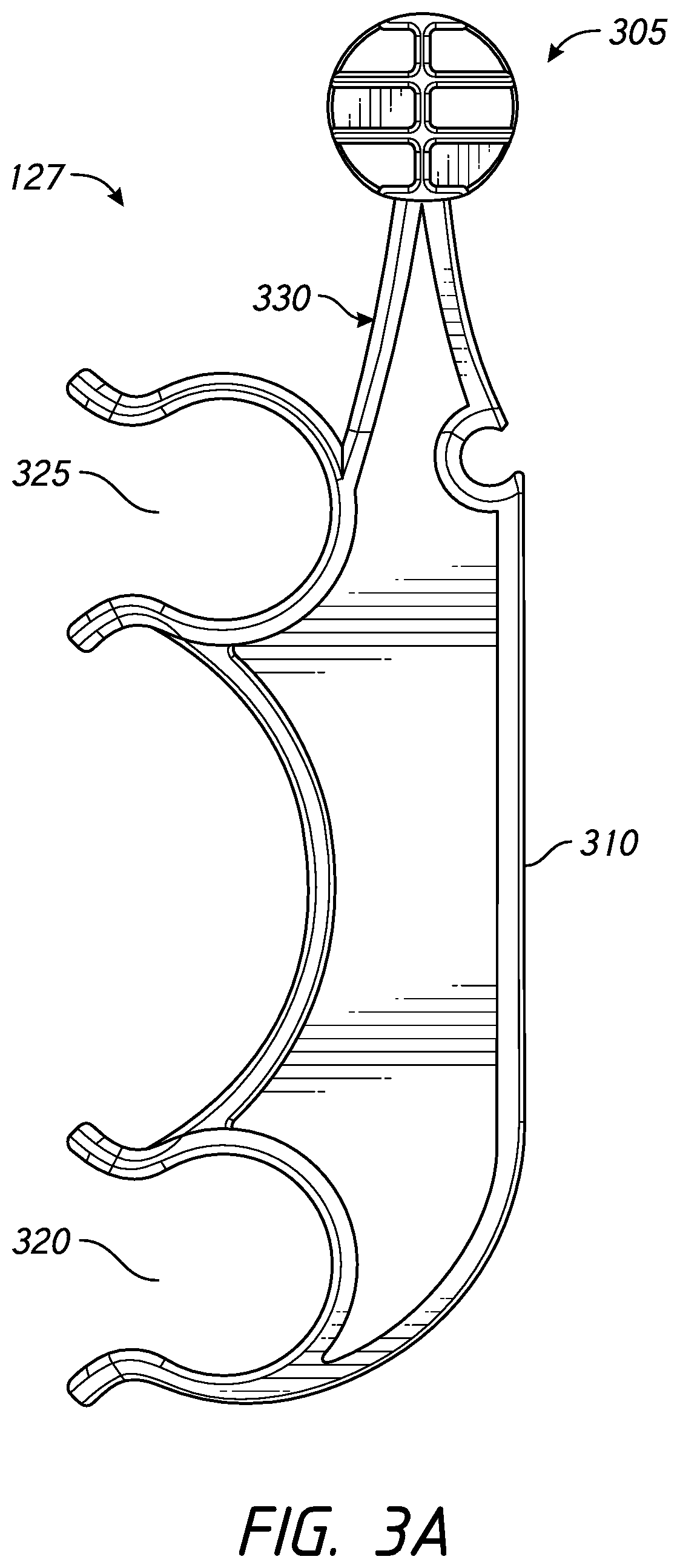Connectors for respiratory assistance systems
a technology of respiratory assistance and connectors, applied in the field of respiratory assistance systems, can solve the problems of reducing the effectiveness of respiratory treatment, reducing patient comfort, and reducing patient comfort, so as to reduce the amount of condensate that drains toward the patient, reduce the effect of respiratory treatment, and reduce patient comfor
- Summary
- Abstract
- Description
- Claims
- Application Information
AI Technical Summary
Benefits of technology
Problems solved by technology
Method used
Image
Examples
Embodiment Construction
[0034]Terms
[0035]The term conduit refers to any tube, channel, or passageway that may be used in a respiratory assistance system. Conduits that may be used to carry respiratory gas in a respiratory assistance system include smooth-bore conduits, which may have inner wall surfaces that are smooth. The width of the conduit wall of a smooth-bore conduit may be constant. An example of a smooth-bore conduit is disclosed in International Application No. PCT / NZ2015 / 050028, which is herein incorporated by reference in its entirety. Conduits that may be used to carry respiratory gas in a respiratory assistance system may also include conduits with inner wall surfaces that are not smooth. Examples of such conduits include corrugated conduits. A corrugated conduit may have a series of parallel ridges or grooves. A corrugated conduit may also be known as a concertina or bellows conduit. Other types of conduits with inner wall surfaces that are not smooth may have helical or spiraling ridges or ...
PUM
 Login to View More
Login to View More Abstract
Description
Claims
Application Information
 Login to View More
Login to View More - R&D
- Intellectual Property
- Life Sciences
- Materials
- Tech Scout
- Unparalleled Data Quality
- Higher Quality Content
- 60% Fewer Hallucinations
Browse by: Latest US Patents, China's latest patents, Technical Efficacy Thesaurus, Application Domain, Technology Topic, Popular Technical Reports.
© 2025 PatSnap. All rights reserved.Legal|Privacy policy|Modern Slavery Act Transparency Statement|Sitemap|About US| Contact US: help@patsnap.com



